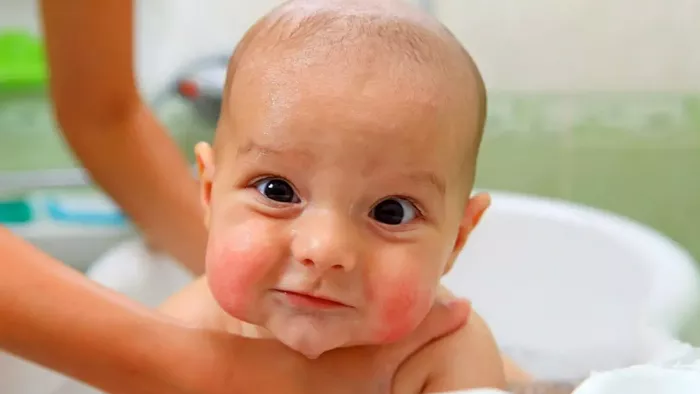Washing a newborn’s delicate hair for the first time is a significant milestone for parents, filled with questions about timing, methods, and ensuring safety and comfort for their little one. This comprehensive guide aims to provide detailed insights into when and how to wash newborn hair effectively, addressing common concerns and offering practical tips for a gentle and nurturing experience.
Understanding Newborn Hair
Newborn babies often arrive with varying amounts of hair, ranging from thick locks to fine wisps, influenced by genetic factors and maternal hormones transferred during pregnancy. This early hair may change in texture and density over the first few months, sometimes shedding entirely before regrowing more permanent hair later. Understanding the nature of newborn hair sets the stage for appropriate care practices.
Factors to Consider
Timing and Frequency
The optimal time to wash a newborn’s hair for the first time typically coincides with the healing of the umbilical cord stump, which usually falls off within the first two weeks after birth. Until this time, it’s advisable to avoid getting the umbilical area wet to prevent infection. After the umbilical stump has healed, parents can safely begin incorporating hair washing into regular bath routines, aiming for about once or twice a week, unless their baby’s hair becomes soiled or oily more frequently.
Skin Sensitivity and Product Selection
Newborn skin is exceptionally delicate and sensitive, prone to dryness, irritation, and allergic reactions. When choosing products for bathing, including shampoo for the hair, it’s crucial to opt for gentle, hypoallergenic options specifically formulated for babies. Look for products that are free from harsh chemicals, fragrances, and dyes, which can exacerbate skin issues. Mild baby shampoos designed to maintain the skin’s natural moisture barrier are ideal for keeping a newborn’s scalp clean without causing irritation.
Water Temperature and Bathing Environment
Creating a comfortable and safe bathing environment is essential for both the baby’s enjoyment and safety. Ensure the room is comfortably warm, around 24-26°C (75-78°F), to prevent the baby from becoming chilled during the bath. Use lukewarm water, approximately 37°C (98.6°F), to wash the baby’s hair, testing it with your wrist or elbow before beginning. Avoid hot water, as it can strip the skin and scalp of natural oils, leading to dryness and potential discomfort for the baby.\
See Also: How Much Time Does a Newborn Take to Breastfeed?
Step-by-Step Guide for Washing Newborn Hair
1. Prepare the Bathing Area: Gather all necessary supplies beforehand, including a soft towel, mild baby shampoo, a gentle washcloth or sponge, and a clean diaper and clothes for after the bath.
2. Check Water Temperature: Ensure the bathwater is comfortably warm, testing it with your wrist or elbow to avoid extremes that could startle or discomfort the baby.
3. Support the Baby: Hold your baby securely in a supported position, ensuring their head and neck are cradled gently but securely.
4. Wet the Hair: Using a soft washcloth or your cupped hand, wet your baby’s hair with lukewarm water, starting from the hairline and moving towards the back of the head. Take care not to pour water directly on the baby’s face or into their ears.
5. Apply Shampoo: Place a small amount of baby shampoo onto your hand and lather it gently between your palms. Apply the shampoo to your baby’s scalp, using your fingertips to massage the product in a gentle, circular motion. Focus on the scalp rather than the hair itself, as newborn hair does not typically require vigorous washing.
6. Rinse Thoroughly: Rinse the shampoo from your baby’s hair using clean, lukewarm water, ensuring all traces of shampoo are removed to prevent residue buildup that could irritate the scalp.
7. Dry and Comfort: Wrap your baby in a soft, dry towel, gently patting their hair and skin dry to avoid friction that could cause irritation or hair breakage. Take care to dry between any skin folds carefully, such as behind the ears and under the chin.
8. Post-Bath Care: After drying, dress your baby in clean, dry clothes and ensure they are kept warm and comfortable. If necessary, apply a mild baby lotion or moisturizer to areas of dry skin, avoiding the face and hands unless advised otherwise by your pediatrician.
Additional Tips and Considerations
Cradle Cap: Many newborns develop cradle cap, a common condition characterized by crusty or oily patches on the scalp. If your baby shows signs of cradle cap, gently brush their scalp with a soft brush or comb after bathing to loosen and remove flakes. Avoid picking at or scratching the affected areas, as this can lead to irritation and potential infection.
Consultation with Healthcare Providers: If you have concerns about your baby’s hair care routine, skin sensitivity, or the presence of cradle cap, don’t hesitate to seek advice from your pediatrician or another healthcare provider. They can provide personalized recommendations and address any specific concerns you may have.
Enjoy the Bonding Experience: Bathing and caring for your newborn’s hair provides valuable opportunities for bonding and nurturing. Approach these moments with patience, gentleness, and attentiveness, allowing you to create positive associations with bath time for both you and your baby.
Conclusion
Knowing when and how to wash your newborn’s hair for the first time is an important aspect of early parenting. By following these guidelines and incorporating gentle, nurturing practices into your baby’s bath routine, you can ensure their hair and scalp remain clean, healthy, and free from unnecessary irritation. Embrace each bath time as a chance to bond with your baby while promoting their overall well-being and comfort.


